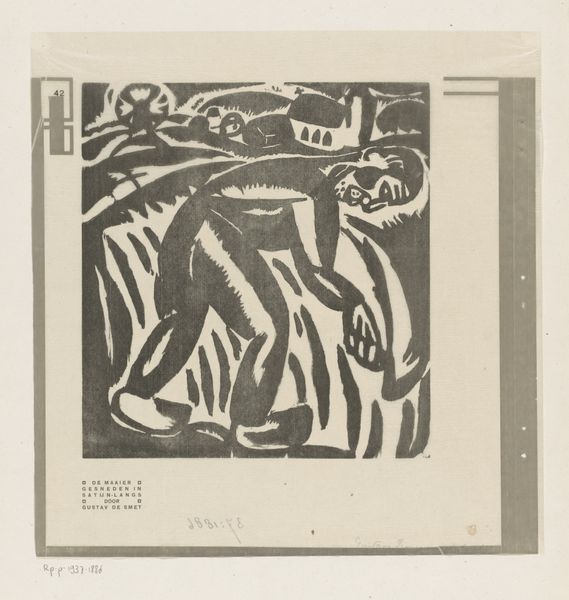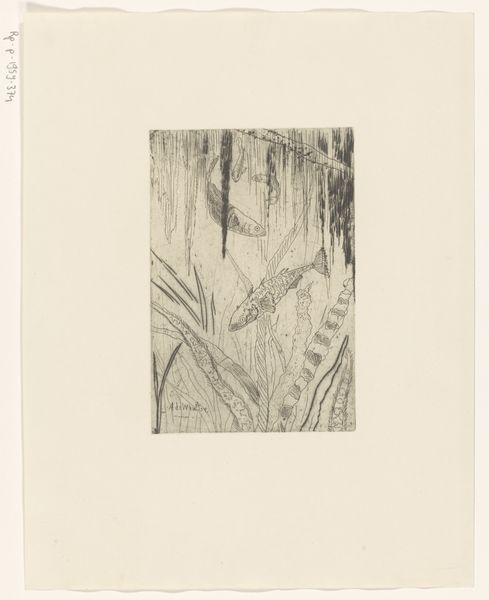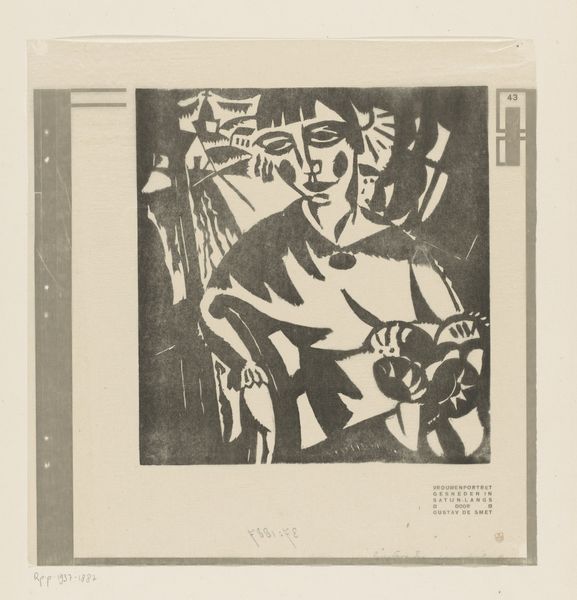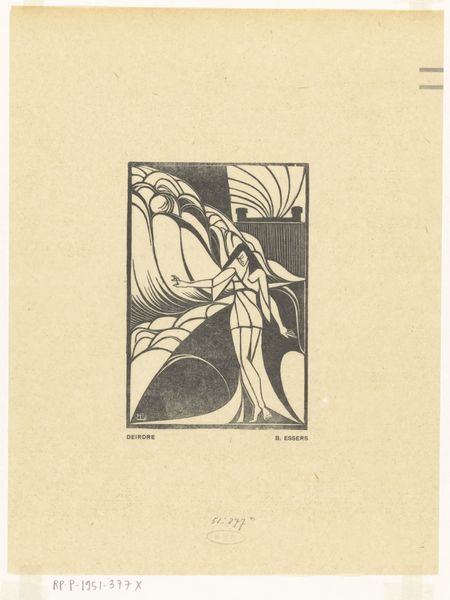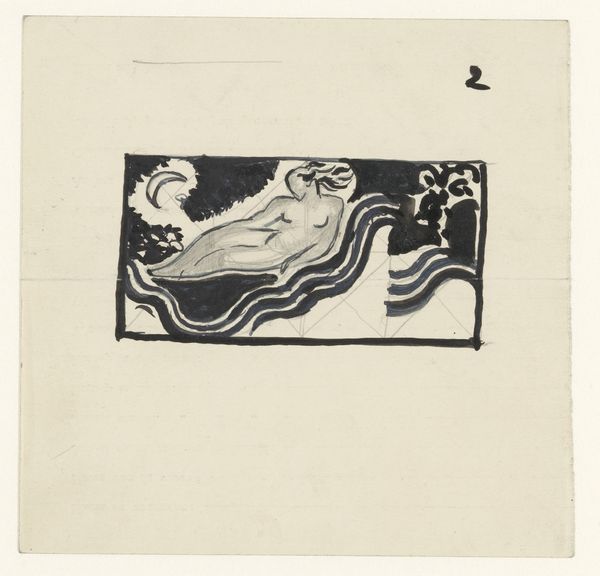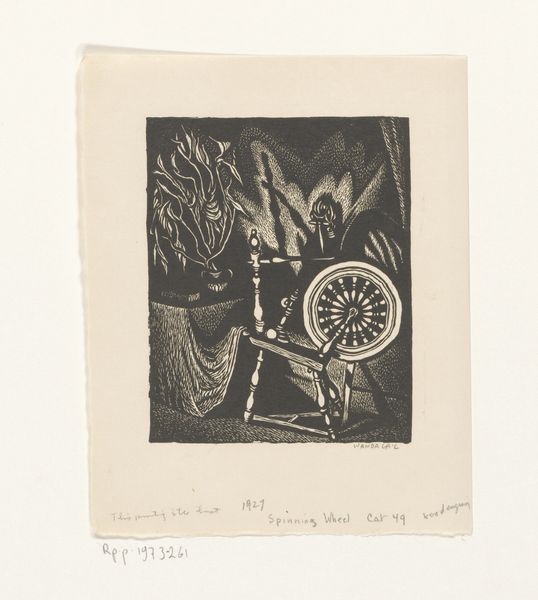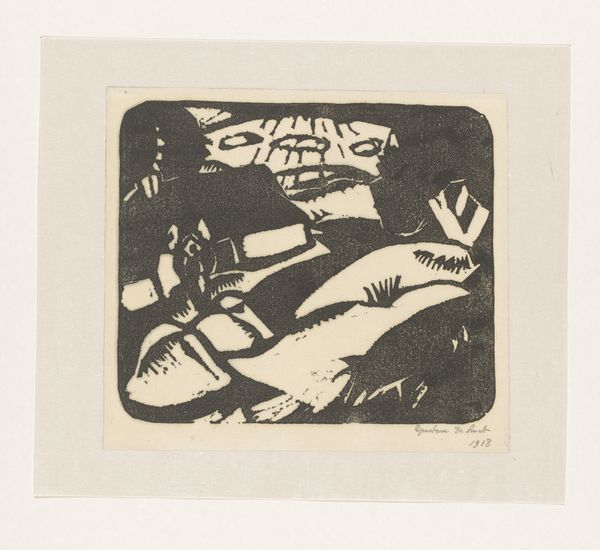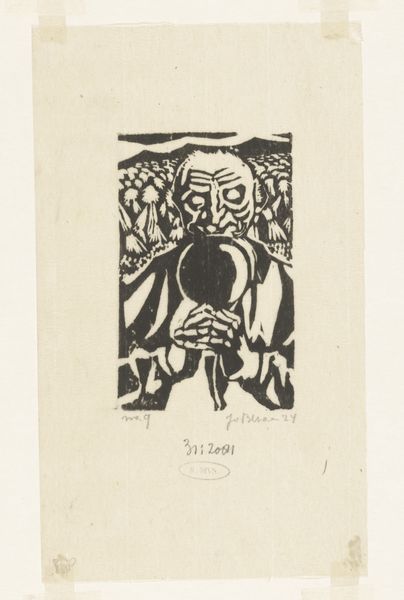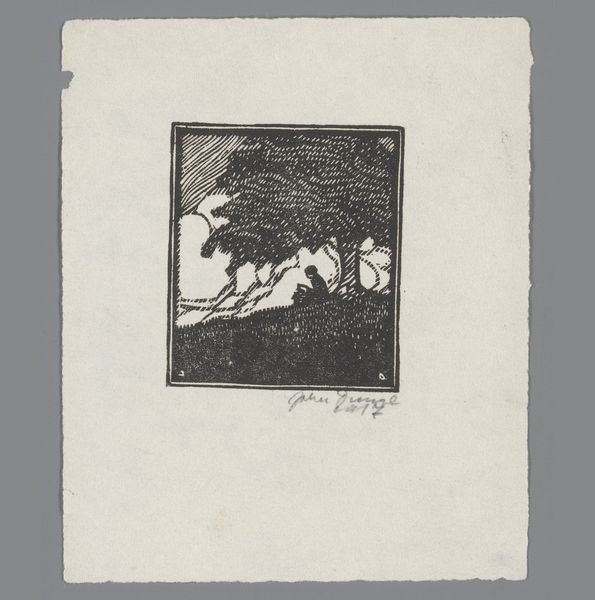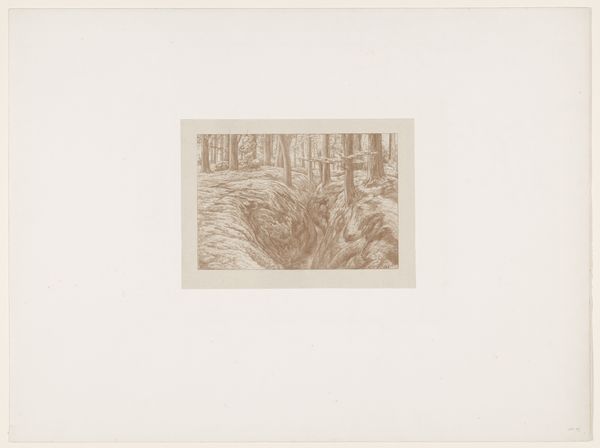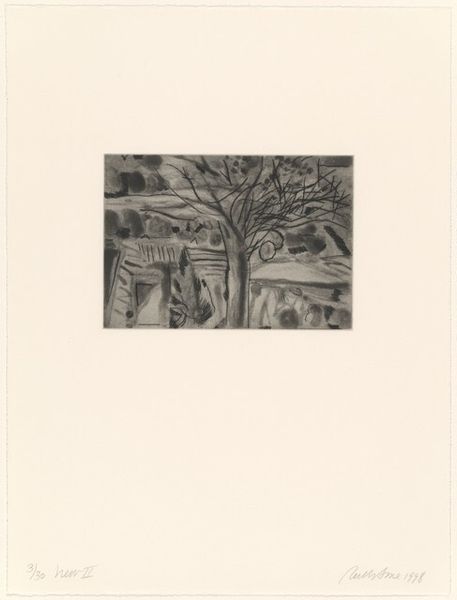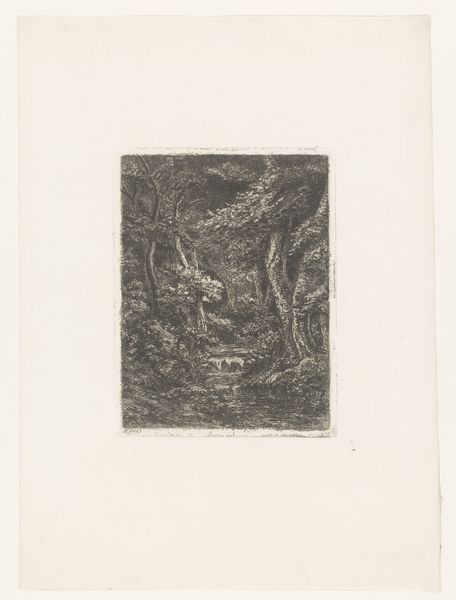
Dimensions: height 96 mm, width 130 mm, height 298 mm, width 282 mm
Copyright: Rijks Museum: Open Domain
Curator: I am struck by the small-scale intimacy of this work. It's so simple, yet captivating. Editor: Let’s take a closer look at "Vogeltje", or “Little Bird,” a woodcut print made by Jo Bezaan in 1948. It’s currently held in the Rijksmuseum collection. Curator: The process really stands out. I can practically feel the texture of the wood in this print. The artist's deliberate carving marks become almost tangible through this medium of relief printmaking. How do you interpret this specific way of making a visible mark, as well as the broader consumption context around print production at the time? Editor: Well, this print emerges in the post-war period. I think that context deeply informs its aesthetic. With limited resources and a desire for accessible art, printmaking offered a democratic medium. The landscape depicted isn’t just nature; it’s a symbol of renewal, a yearning for peace after conflict. And the Rijksmuseum, acquiring this piece, elevates it to national significance. What about the stylistic features – Art Nouveau meets figuration. How would you define Bezaan's take on these approaches? Curator: Definitely a personal style in here. Bezaan has simplified both. Look at the floral shapes; stylized yet retain a clear relationship to plant life. What are your thoughts about its social context? It’s made immediately following WW2, during a period of material shortages and rationing in The Netherlands, which shaped artistic output to become modest in format and reliant on natural resources for supplies such as wood, ink, and paper. It speaks about this environment through form and production values. Editor: The composition's small scale becomes all the more relevant then, echoing restricted availability and perhaps, as I touched on, symbolizing the importance of finding beauty in modest settings after major trauma. The black and white emphasizes these notions, stripped down to only the bare essentials, with an expressive, illustrative style. Curator: This work prompts important considerations concerning the relationship between an artwork's historical background, how material constrains dictate its production methods, and subsequently how viewers encounter its emotive qualities. Thank you. Editor: Absolutely, and through this 'Little Bird,' we encounter big ideas. A tiny print speaking volumes about a significant time.
Comments
No comments
Be the first to comment and join the conversation on the ultimate creative platform.
